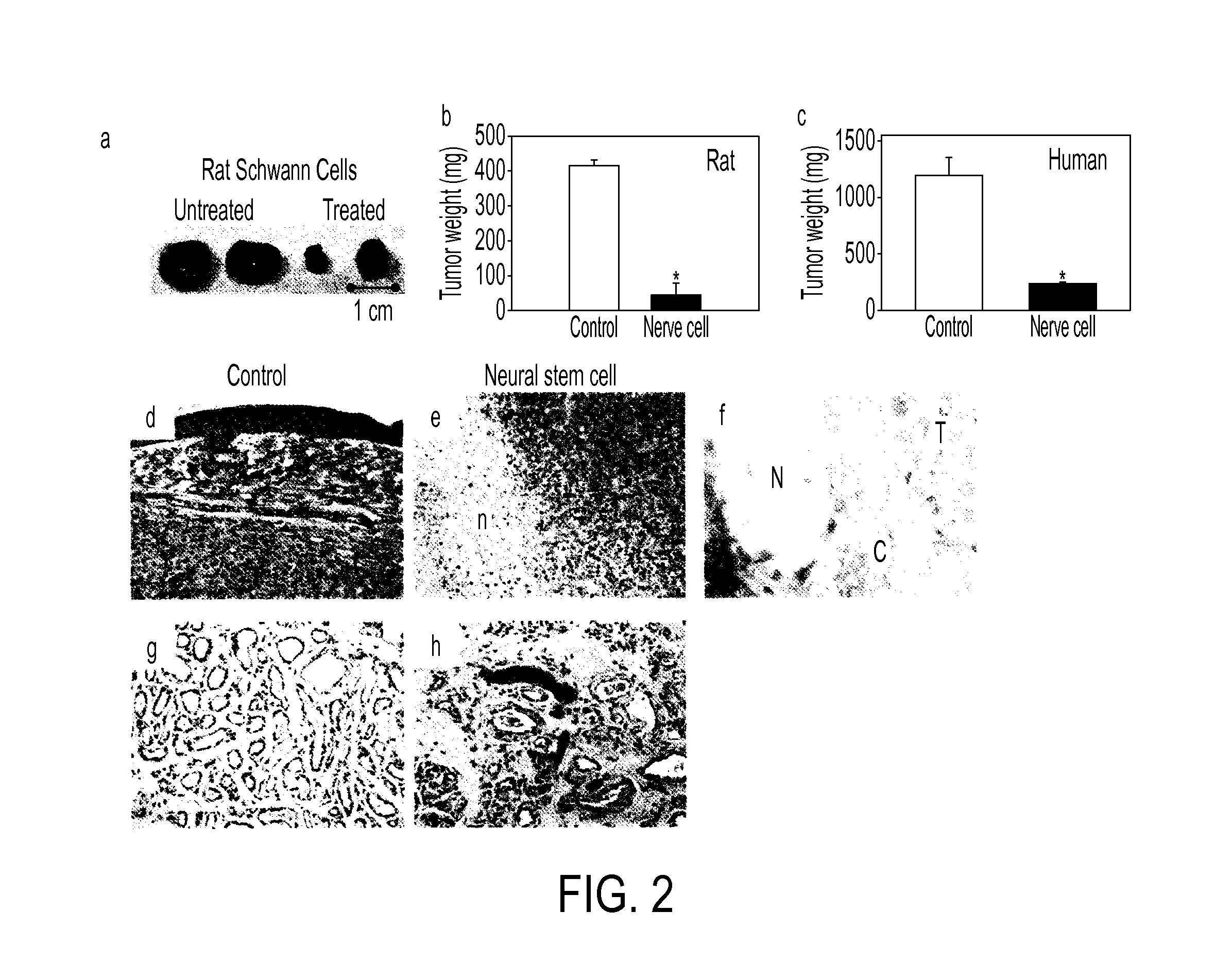Use of neural stem cells for treatment of malignancy
a neural stem cell and malignancy technology, applied in the field of neural stem cell treatment of nonneural malignancies, can solve the problems of scarring and infection, potential recurrence and even metastasis, and risks of therapies, so as to avoid possible tissue mismatch and the resultant possibility of immune rejection
- Summary
- Abstract
- Description
- Claims
- Application Information
AI Technical Summary
Benefits of technology
Problems solved by technology
Method used
Image
Examples
Embodiment Construction
[0052]I have postulated that cells of neural lineage that innervate organs act as formidable barriers to tumor growth by secreting a potent cocktail of anti-angiogenic factors. Moreover, Schwann cells in the neural sheath participate in this barrier function by expressing high levels of Notch-1, a factor found to be important in maintaining the neural stem cell niche with PEDF (5-7), and in orchestrating embryonic vascularization (11).
[0053]In normal tissue, inhibitors of angiogenesis dominate over inducers to maintain vascular quiescence. Tumors can evade the activity of inhibitors through proteolytic degradation leading to a concurrent loss of neural cell survival factors. Normal nerves have a relative paucity of vessels; however, in diabetes, where VEGF is in excess, peripheral nerve vascularization is associated with degenerative changes in Schwann cells (12) and distal denervation (13) One interesting study of pancreatic cancer neural remodeling found a nearly 5 fold increase i...
PUM
 Login to View More
Login to View More Abstract
Description
Claims
Application Information
 Login to View More
Login to View More - R&D
- Intellectual Property
- Life Sciences
- Materials
- Tech Scout
- Unparalleled Data Quality
- Higher Quality Content
- 60% Fewer Hallucinations
Browse by: Latest US Patents, China's latest patents, Technical Efficacy Thesaurus, Application Domain, Technology Topic, Popular Technical Reports.
© 2025 PatSnap. All rights reserved.Legal|Privacy policy|Modern Slavery Act Transparency Statement|Sitemap|About US| Contact US: help@patsnap.com



